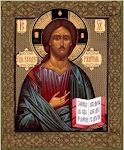Saturday, January 22, 2011
In Search of the Gypsy Church in Chicago: Part I
I have been interested in Gypsies or Roma for as long as I can remember. Everything about them seemed to tell me that however you live, everything could be different. I find myself interested in lots of different cultures; the further removed from Western culture the better. I went to Coptic, Ethiopian, West African, Assyrian, Chinese and Arabic speaking churches. I spent time in Chinatown, Pilsen, and Devon Avenue. I went to Powwows, Mosques, Islamic bookstores and every kind of ethnic restaurant I could find. Still, I had to find the Roma!
I loved their music/s, dance, dress and use of color. Even the stereotypes are etched in my mind. I remember as a kid watching Mighty Mouse on WGN. My favorite episode was “The Gypsy Life.” Was this episode a blatant characterization of a people? Of course but it still demanded my attention. I remember growing up loving paprika, scarves, tambourines and violins. Perhaps it was just the antidote for a stoic Norwegian-American life!
Treasures of the ASIFA-Hollywood Animation Archive 07
I remember my surprise when I found out that some of my favorite dance forms were all connected by the thread of Roma culture. What a tapestry! The fact that folk dance in India, belly dancing in the Middle East, flamenco in Spain and Cossack dance in Russia all shared a common ancestry fascinated me. It is impossible to watch any of these dance forms and to not begin to tap your foot, keep beat with your shoulder, or begin to move your hips. There is nothing cerebral about this art form it is just life flowing to music.
Gypsy Dancing Evolution
Roma music is one form of World Music. Listen to Loyko a Russian trio, the music is haunting. It calls up images of centuries of struggle and of persistence in the face of challenging circumstances. The music enters your ears and then flows into your blood.
Loyko - Loyko (live in Vitebsk)
I grew up in Chicago. I have visited New Orleans, St. Louis and Memphis Tennessee. These are centers of jazz. I have a growing appreciation of jazz, partially due to a colleague, Lon Bhonke, who is a jazz music evangelical! Well Gypsy music is not stuck in medieval Europe or only influenced by the music of the Volga or of Islam. Gypsy music is alive, current and influencing contemporary music forms, including jazz.
Minor Swing (Django Reinhardt) - Gypsy jazz manouche guitar - Latchés
I love Klezmer music, and not just because I like Woody Allen! Well Roma music and Klezmer have mutually influenced one another. Watch a Chasidic bottle dance to Klezmer and you could almost picture gypsies in the corner keeping time to the music.
Open show Big Klezmer band Chasidic dance. Very quick unique
However, if my interest in Gypsies was only about music and dance that would be pretty one dimensional. I am fascinated by peoples who are considered outsiders and have to find a niche for themselves. Roma are not alone in this. East Indians in Africa, the Chinese in Southeast Asia, and Jews in Europe have all had similar struggles. Each of these groups have been influenced by their adopted countries but have also left their mark on their new homes. This is also true for the Gypsy. They have also all suffered persecution.
According to the United Nations, the Roma are the single most persecuted peoples in Europe today. In Rumania, the Balkans and Hungary reports of human rights violations persist. Surveys consistently reflect anti-Roma perspectives. Gypsy tent cities have been demolished in Rome and gypsies have been expelled from Ireland and France. It is difficult to stop being an outsider when the dominate culture persecutes you, it is difficult to be accepted by the dominate culture if you are not willing to give up our identity as an outsider.
These are a people who left northern India. Who migrated through Afghanistan, Persia and who split into various groups. Some went north into Ukraine and Russia, other the Middle East and North Africa and Spain and other still central Europe. There are 14 million Roma in the world today, most are in Central Europe. However, the migration to the United States starting in the mid 1880s was not insignificant.
Imagine my excitement when prior to my sabbatical I discovered there were Gypsy Churches in Chicago. I watched the videos of the church services, I listened to the music and read whatever I could get my hands on. I could not wait to attend a Gypsy service. I would soon discover that it was not that easy. I would discover that actually finding church was a challenge. I would ultimately discover that it was worth the challenge, I was not disappointed.
I loved their music/s, dance, dress and use of color. Even the stereotypes are etched in my mind. I remember as a kid watching Mighty Mouse on WGN. My favorite episode was “The Gypsy Life.” Was this episode a blatant characterization of a people? Of course but it still demanded my attention. I remember growing up loving paprika, scarves, tambourines and violins. Perhaps it was just the antidote for a stoic Norwegian-American life!
Treasures of the ASIFA-Hollywood Animation Archive 07
I remember my surprise when I found out that some of my favorite dance forms were all connected by the thread of Roma culture. What a tapestry! The fact that folk dance in India, belly dancing in the Middle East, flamenco in Spain and Cossack dance in Russia all shared a common ancestry fascinated me. It is impossible to watch any of these dance forms and to not begin to tap your foot, keep beat with your shoulder, or begin to move your hips. There is nothing cerebral about this art form it is just life flowing to music.
Gypsy Dancing Evolution
Roma music is one form of World Music. Listen to Loyko a Russian trio, the music is haunting. It calls up images of centuries of struggle and of persistence in the face of challenging circumstances. The music enters your ears and then flows into your blood.
Loyko - Loyko (live in Vitebsk)
I grew up in Chicago. I have visited New Orleans, St. Louis and Memphis Tennessee. These are centers of jazz. I have a growing appreciation of jazz, partially due to a colleague, Lon Bhonke, who is a jazz music evangelical! Well Gypsy music is not stuck in medieval Europe or only influenced by the music of the Volga or of Islam. Gypsy music is alive, current and influencing contemporary music forms, including jazz.
Minor Swing (Django Reinhardt) - Gypsy jazz manouche guitar - Latchés
I love Klezmer music, and not just because I like Woody Allen! Well Roma music and Klezmer have mutually influenced one another. Watch a Chasidic bottle dance to Klezmer and you could almost picture gypsies in the corner keeping time to the music.
Open show Big Klezmer band Chasidic dance. Very quick unique
However, if my interest in Gypsies was only about music and dance that would be pretty one dimensional. I am fascinated by peoples who are considered outsiders and have to find a niche for themselves. Roma are not alone in this. East Indians in Africa, the Chinese in Southeast Asia, and Jews in Europe have all had similar struggles. Each of these groups have been influenced by their adopted countries but have also left their mark on their new homes. This is also true for the Gypsy. They have also all suffered persecution.
According to the United Nations, the Roma are the single most persecuted peoples in Europe today. In Rumania, the Balkans and Hungary reports of human rights violations persist. Surveys consistently reflect anti-Roma perspectives. Gypsy tent cities have been demolished in Rome and gypsies have been expelled from Ireland and France. It is difficult to stop being an outsider when the dominate culture persecutes you, it is difficult to be accepted by the dominate culture if you are not willing to give up our identity as an outsider.
These are a people who left northern India. Who migrated through Afghanistan, Persia and who split into various groups. Some went north into Ukraine and Russia, other the Middle East and North Africa and Spain and other still central Europe. There are 14 million Roma in the world today, most are in Central Europe. However, the migration to the United States starting in the mid 1880s was not insignificant.
Imagine my excitement when prior to my sabbatical I discovered there were Gypsy Churches in Chicago. I watched the videos of the church services, I listened to the music and read whatever I could get my hands on. I could not wait to attend a Gypsy service. I would soon discover that it was not that easy. I would discover that actually finding church was a challenge. I would ultimately discover that it was worth the challenge, I was not disappointed.
Subscribe to:
Post Comments (Atom)













No comments:
Post a Comment